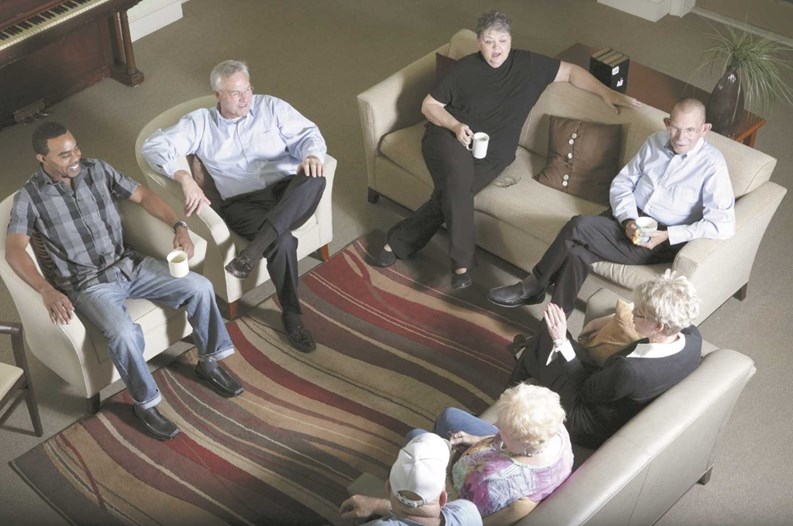In an urban environment, people can feel isolated, though they live close to each other. While high-rise residential buildings put families near one another, living close doesn’t turn a group of neighbors into a community and that’s understandable, since people are busy and schedules are hectic. In some buildings in their downtime, few residents eagerly attend their building’s annual meeting or socialize with their neighbors. But attracting committed board members and creating a sense of community improves the quality of life within the building and saves money. It’s good to know that there are many ways that co-ops and condos can work to foster a stronger sense of community among their residents, while also attracting new board members and committee members.
Making Connections
In the city, people don’t always want to interact with strangers, because they’re used to being on their guard. Others feel no reason to socialize. In some multifamily communities a significant percentage of the residents are renters, who may not be as fully invested in the community. Some are newly arrived shareholders still stuck in a renter’s mentality, and don't immediately see the value in forging connections with their neighbors.
“A lot of the problem is most co-op owners are working people. Their time to participate is limited,” says Steven Gold, president of Hudson View Associates, a management firm in Manhattan. “When I see them get involved, it’s something infringing on their life.”
In some buildings, part-time residents who also live elsewhere are not always attuned to what’s happening in their city home. People with busy careers and families don’t have the time to volunteer, and some people prefer to remain anonymous and don’t want to be involved. Some buildings don’t offer much enticement to go to community functions, while others get creative.
Jay Cohen, vice-president, director of operations for property management firm A. Michael Tyler, said his company serves some clients who take a “town hall meeting” approach to the matter. A. Michael Tyler encourages its clients’ boards to have town hall meetings two or three times a year. At town hall meetings, the board of directors tells owners what’s going on with the building, and refreshments are served. Depending upon the needs of the community, the board might invite an architect to talk about a planned maintenance project, or have the accountant talk about the building’s finances.
Before the town hall meeting, a newsletter is sent to residents, informing them of upcoming building renovation projects, the building’s annual budget, or other community news. The newsletter always includes a brief asking for residents who’d like to volunteer for the gardening, decorating, engineering, and newsletter committees. Some communities prefer to send a separate note to residents a couple times a year, soliciting their help on committees.
In some buildings, residents do most of the landscaping through the gardening committee. The building buys the materials and plants and the committee members do much of the work, in coordination with the landscaper.
“The members of the gardening committees are very close and they enjoy it,” Cohen says. “It makes other people feel good to see that beautiful, landscaped garden.”
Through the gardening group and other committees, residents can also ensure that their perspectives on a matter are considered. “The squeaky wheel always gets the grease,” Gold says. “[Resident involvement] helps in beautification of the place—such as chipping in for new garbage cans or getting the area planted with trees from the city.”
Having enough volunteers in the building equips the community to take a wider view of the building’s place in the neighborhood and city. Having committee members represent a building with the committee members of other residential buildings around them, is one benefit. While creating greater awareness of building issues, such as planned city street upgrades or other work affecting residential buildings, the cross-building interaction can be as simple as enabling parents to talk about which schools are best for their kids, or to set up a play date.
Picking Up the Slack
Not having the chance for your kids to interact with new friends, or not realizing until the last minute that a major construction project is soon to happen next door, are just a couple of things that can be missed when you are not involved with your community. Existing in such ignorance is like living with your head in the sand, Gold says. “You don’t know what’s going on around you—the city could be doing something that will affect you, like working at nights, or a new building could be going up next door. When you find out, it could be too late to complain,” he says.
Being on a board or committee does take time, says Carol Lehti, chairman of the board of 60 Sutton Place. But getting involved with the community is a question of helping yourself.
“This is really my home, no different from people living in suburbia. That’s why I volunteer—I love the building,” Lehti says.
Oftentimes, people will get angry when things are done and they believe they should have been consulted but feel they were not. Usually, they could have registered their opinion if they had known to do so in a timely manner.
“On major decisions on common areas [like re-doing the lobby], when something happens that you don’t like, you’re mad,” Lehti says.
City people don’t want to mix too much with strangers, and one way to break the ice between neighbors is an informal gathering such as a town hall meeting. Another method is having a winter holiday party, like a cocktail party in the lobby. Some communities have a potluck dinner in the summer, to allow people to mingle together.
“New Yorkers sometimes only come together in a crisis,” Gold says. “But they will loosen up at a cocktail party.”
Perhaps the best way to get other residents involved is to have very transparent board operations, and to spread the word as much as possible. Create or regularly maintain an informative building website, and send community update emails to residents. Create or update a newsletter (online or on paper, depending upon the community) and distribute it to residents, informing them of building news such as upcoming projects, new residents in the building, recent births or deaths, anniversaries, who is sick or needs help and other information. Some communities use the web-based BuildingLink program, which enables residents to send messages through it.
Sutton Place, with 366 units, still manages to keep some semblance of an almost small-town, neighborly atmosphere. The community’s Know Your Neighbor program was started several years ago, and helps neighbors who are immobile from illness or surgery or who otherwise could use a hand from their fellow residents. The program also enables friends to check in on elderly residents. “We try to be helpful, and make sure our neighbors don’t feel stranded,” Lehti says.
A person doesn’t need to be involved with the building in order to be a good resident, but it does help everyone. Some commitment is needed when volunteering for the community, though, if a volunteer is going to be effective.
It does help a lot to have people involved with the committees of the board because their involvement takes some of the management burden off of the shoulders of the board members. Residents with particular skills can contribute those skills to the good of everyone. Accountants living in the building might help on the finance committee and find ways to save money on the budget, or an engineer or architect might help with a building committee overseeing a major project in the building. Other, less obvious skills also are needed in managing a community and can be found among residents, such as bringing a designer’s professional eye to a lobby renovation or garden reconfiguration.
“If you have a good writer in the group, it’s good to have him or her involved with the newsletter,” Gold says. “The landscaping committee might even roll up its sleeves and get involved in planting or other landscaping, which could save the building money.”
Residents who contribute time and labor to fix something up in the community, naturally feel more invested and take ownership of projects in the community. “If someone comes to a board meeting to complain, I say, ‘Join the committee,’” Lehti says. “It’s good to do it, it’s important. Don’t complain if you want to be part of something, and you don’t contribute.”
By having people in the community helping themselves in building matters, thousands of dollars can be saved each year. In buildings with little communication, anonymous “poison pen” letters can circulate, fueling rumors about building issues. Gestures such as winter holiday parties, Halloween events for the children, and town hall meetings with refreshments can bring neighbors together and build a greater sense of community.
The best foundation for a strongly built community, though, is for the place to be well-managed. Communicating what’s happening with the building is is key to building trust.
“When shareholders come to a meeting and see that a project will be done and they are nodding their heads in agreement, you have a sense that people are feeling good about their building. They’re glad they bought into the property,” Cohen says.
Remember, though, creating a tighter-knit community isn't all about picnics, games and town hall meetings. Fostering greater involvement often means getting neighbors to take a hands-on approach to managing the community. It might take some creativity on the part of the board or association but the outcome is well worth the effort.
Jonathan Barnes is a freelance writer and a regular contributor to The Cooperator.







Leave a Comment